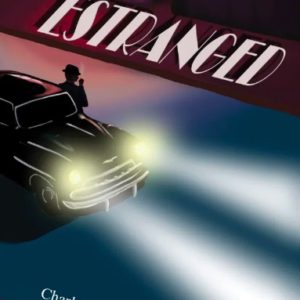My hometown, Oxford, is a city of bookish ghosts. Its honeyed streets—now spookily empty—hold shimmery echoes of its literary past. And I’m not talking about the obvious here: Inspector Morse or His Dark Materials, or even the University’s 45 Colleges with their medieval cloisters and chapels and gargoyles. I’m talking about the characters that haunt the little alleys, nooks and crannies, the tunnels and vaults, the hidden graveyards. One of my favorites spots is an unobtrusive doorway right in the city centre where a lion’s face is carved into the wood, two golden fauns perched above him: a physical inspiration, so I’m told, for C.S. Lewis’s Chronicles of Narnia. Another regular haunt of mine is Christ Church meadow. Every day I walk my dog along the river bank where mathematics don Charles Dodgson sat making up stories for a little girl called Alice.
But it isn’t just the surface of the city that’s haunted. Near my house, by the River Thames, is the end of an underground waterway—‘The Trill Mill Stream’—down which, in 1908, a particularly adventurous undergraduate called T. E. Lawrence illegally sailed his canoe. (He’d grow up to become ‘Lawrence of Arabia’). Then there are the subterranean book tunnels, a dimly lit labyrinth built in the early 1900s by the Bodleian Library to house its overflow of books. These tunnels run beneath the tourist feet, the buses and students on bicycles, linking several University libraries. Most people taking selfies in front of the glorious, circular Radcliffe Camera building (also part of the library), don’t realize that they’re standing over a system of conveyer belts that are busy transporting books from hidden stacks to 29 reading rooms in various libraries.
Elsewhere in the city, dotted in leafy little enclaves, are Oxford’s hidden graveyards; essentially, a who’s who of western cultural influencers.Elsewhere in the city, dotted in leafy little enclaves, are Oxford’s hidden graveyards; essentially, a who’s who of western cultural influencers. My favorite is Holywell, a Victorian churchyard only a stone’s throw from the High Street, but entirely hidden. If you’re brave enough to go through its little gate, down a tunnel of greenery and past a creepy, derelict gatehouse then you’ll find yourself in an overgrown and mystical space where you’ll be greeted by Kenneth Grahame, author of The Wind in the Willows. He died in 1932 and lies next to his only child, Alastair, who—devastatingly—took his own life on the Oxford railway track in 1920 just five days before his 20th birthday.
But it’s not all sad in the cemetery. Holywell is a vibrant place, populated not just by authors but by composers and botanists, mathematicians and Sanskrit scholars, classicists and brain surgeons. A snapshot of Oxford. Even the ‘ordinary’ townspeople are extraordinary: there’s Theophilus Carter, the eccentric furniture dealer who inspired Lewis Carroll’s Mad Hatter, and Basil Blackwell, whose little bookshop expanded into the Oxford institution that’s going strong even today, despite its closed doors (Blackwell’s recently threw a virtual book launch party for me—which might perhaps make Basil turn in his grave—I didn’t check.) On a sunny day, it is an oasis of wildlife: I’ve seen deer and rabbits and foxes there. But I have to admit, it can get a little creepy. The last time I wandered in—it was a misty, autumnal day—I spotted, over by a crumbling tombstone, a muscular white dog, waist high at least, her pale blue eyes fixed on my face. Later, I stumbled over a human thigh bone (dug up by badgers, or so I’m told).
Of course, this is all irresistible for a novelist—and Magpie Lane certainly bears Oxford’s ghostly traces. There is Linklater, the eccentric ‘house detective’, who has a side-line running Ghost Tours and likes to wander the graveyards, thinking about thinking. And of course, Magpie Lane is mostly set in the 400 year old ‘President’s Lodging’, a beautiful but unsettling house with an ancient priest’s hole tucked away on the attic floor where Felicity, a spooked little girl, and her Scottish nanny, Dee, spend some very fraught nights.
Part literary gothic, part crime mystery, part love story, Magpie Lane is definitely hard to classify. But perhaps it’s just a love letter (some might say an anti-love letter) to Oxford, and all the literary characters—both fictional and real—who haunt her.
***


















